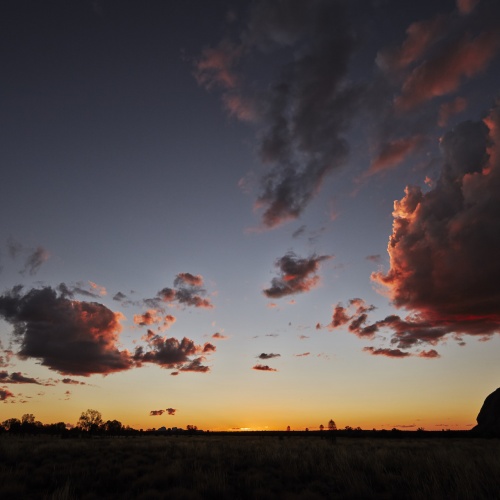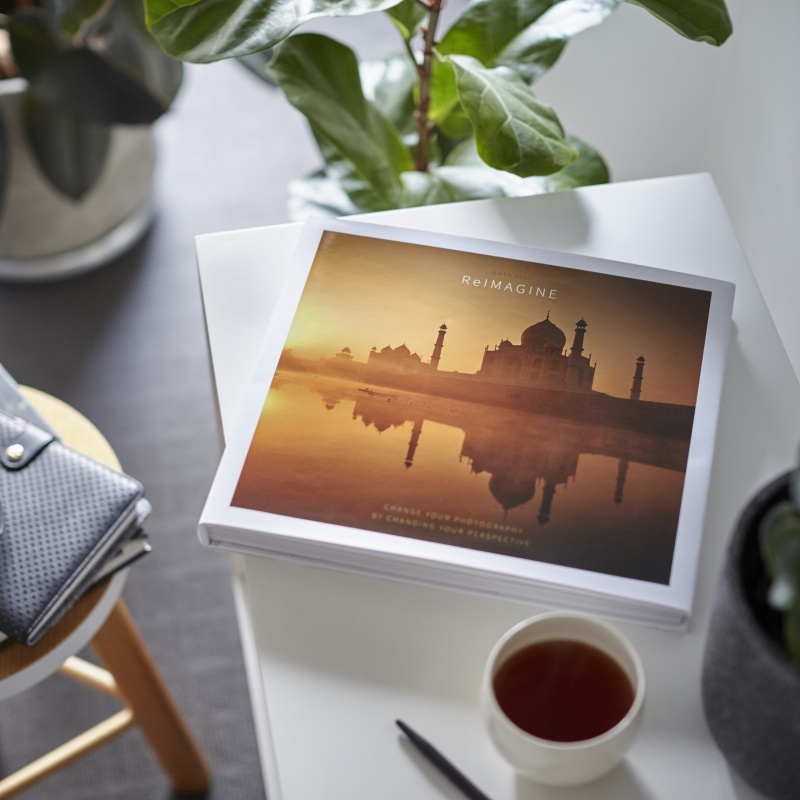Uluru / Outback / Australia

Uluru / Outback / Australia
35 images
The centre of Australia is a desert of colour. Sand is stained red with minerals, deep yellow flowers cascade off grevillea bushes and the sky is a flood of blue except for the occasional sunset where clouds throw back hues of orange and pink. In the middle of this colour palette is a massive rock, rising sharply from a rippled landscape. Each fold along it’s flanks have been drawn into stories by the local Anangu, like bookmarks in a library that has been standing long before there even was a desert. Uluru and Kata Tjuta are drama on a geological scale.

I have a full guide for photographers visiting Uluru so please take a look:
https://ewenbell.com/blog/Uluru_for_Photographers
A year ago I wrote a short piece for National Geographic on the same topic, and their staff writer butchered it with their fevered dedication to listicles. The writer didn't want to know how to take better photos and missed the point of most of what I had to offer. So I'm posting my original draft here for the record...
Advice for Shooting Uluru
The limitations on photography at Uluru are born out of respect for the First Peoples and their traditions. There are sacred sights and places that are only accessible to the communities who live there. Limitations also exist on where you can move through the park and access after dark, which are more to do with mitigating the impact of having hundreds of thousands of visitors rolling through each year. You are not allowed to walk off the marked trails, and not allowed to stay inside the park once the sun has gone down. In special circumstances you can apply for a permit to access non-public areas and hours, but they are not routinely given out and require consultation with the Indigenous community. Professional photographer also need to photography under a permit to shoot and submit their images for review to the parks team. This requirement is not imposed on general visitors, who are asked to abide by the wishes of the Anangu people and refrain from capturing images of sacred sites.
Yes the limitations do impact what you can and cannot photograph. No it is not the end of the world to abide by these rules. It's a very big park and there are lots of stunning scenes to photograph even when sticking within the rules.
Into The Light
One of the easiest ways to avoid revealing sacred areas of the rock in your captures is to shoot for silhouettes. You can obscure sacred details into darkness when shooting back into the light, which opens a world of creative opportunities plus the added joy of getting away from the crowds. Visiting the "Sunset Carpark" at sunrise, for example, lets you enjoy a peaceful moment of tranquility between you and Uluru with very few other visitors, if anyone at all. All the better if a few clouds crash the scene to echo the pre-dawn colours. Shooting back into the sun creates many new variables for creativity and steps you outside the conventional landscape context. In 2011 a new viewing area was opened to the public called Talinguru Nyakunytjaku, with excellent parking and toilets. It was designed for sunrise viewing and to resolve the roadside chaos that marred the previous sunrise location on the inner ring-road. Talinguru at sunset is one of my favourite experiences in the park, with very few people staying for the last light and a cracking scene back towards Kata Tjuta as the sun makes a final retreat for the day. The walking trails around the viewing platform also offer unexpected moments of inspiration from the vegetation and a chance to capture pieces of Uluru as it emerges from the scrub.
Love The Little Things
The flora of this national park is truly wonderful. It's a magnificent desert habitat and through the year a range of flowering shrubs, grasses and trees show their charm. Even when not flowering the muted tones and intricate textures of desert flora make for beautiful compositions. Every time I visit Uluru the landscape has a different character, based on when the last rains happened and how much new growth has come through each year. Sand dunes become hidden beneath spinifex grasses, grevilleas burst into golden hues, thryptomene are carpeted with little pink flowers and bush tomatoes turn shades of yellow and purple as they cling onto the bush. This is where a 70-200mm can be useful, especially closer to the 200mm end. Standing back and using the shallow depth-of-field that comes with telephoto allows you to isolate a few leaves or flowers from the surrounding chaos. Whenever you walk to a viewing platform make sure to leave time to pause along the way and pull out a few details from the vegetation.
Don't Climb It - Fly It
Climbing the Rock is a clear source of cultural disrespect for the Anangu people and as of October 2019 will be coming to an end. Once the climbers and the chain rope that scars the surface of Uluru is removed we will have one less obstacle to avoid when taking photos. The guidelines have included the rock climb as something to avoid photographing in the past. If you really want a birds eye view of the landscape there is a better way regardless. Helicopter services operate from the nearby Yulara Airport and give you an unparalleled perspective of the rippling sand dunes, the mosaics of vegetations and both Uluru and Kata Tjuta as they rise up suddenly from the desert. Doors-off flights are routine options and the pilots are well versed in getting you into position for good light and good angles. Restrictions still apply to sensitive areas of the rock, and pilots must avoid flying too close to the Mutijulu community to the East of Uluru. My prefered lens for helicopter flights is usually a 24-70, but for Uluru the 16-35 lets you work the lines of red dunes at dawn a little harder. The very first light is my favourite for the clear winter skies, although gloves and a very warm jacket are well advised as the air temperature up there can drop to freezing. There is a height limitation for aircraft inside the park as well, so you cannot drop below 1500ft, but once outside the park you can go down to 500ft and work those desert foregrounds.
Feathered Friends
Winter is peak time for visitors at Uluru because the weather is nice and the air is dry. It's also a great time for bird life with lots of birds escaping the wet weather in the south. When the rains refresh the desert between February and April you end up with abundant birds around the park in June and July. If you're not experienced with chasing birds in the wild there is an App available to help you. Uluru Birds gives you a heads up on what species are around and some suggestions on where to find them. I have enjoyed wonderful encounters with birds at car parks around the National Park and the hotels at Yulara. Birds that tolerate the presence of humans are the ones you are more likely to get a good photo of, and carparks where there is running water and the potential for an easy snack will be attractive to many individuals. The trees and shrubs around the hotel car parks offer additional incentive for birds, coming in to feed on native bushes and flowers.
Take Your Time
I have three rules which dictate my photography. Let the light guide you. Get closer. Go Slow. Most people give themselves too little time to enjoy Uluru and end up leaving having seen very little. Very few guests stay for longer than two nights and most for just the one. The light on Uluru changes throughout the day, hence changing the colours of the rock. It's a different sight each time and that's before you factor in the arrivals of different kinds of clouds. I once ran a workshop in the park for an entire week and still we left feeling there we could use one more day. By giving yourself time to enjoy a full afternoon at one location in the park you will see how the scenery changes with the light, how it moves from dusty and harsh to soft and golden. Having extra nights to visit means you can come back if the clouds have stolen your sunrise, or visit a different viewing spot for the same bundle of rocks. Another guiding principle of my photography is to enjoy the experience before the exposures. To this end, give yourself a day to complete the loop walk around Uluru. It's about 12km in total if you do all the side walks, and it takes you up close to the rock so you can feel it's skin and breath in the landscape. There are a few nice scenes to enjoy on the trail, but it's a chance to get properly familiar with the subject before you start trying to capture it on film.

"ReIMAGINE" is now available to order online.
It's a very big and very generous book that will help you to reconnect with your creative side.